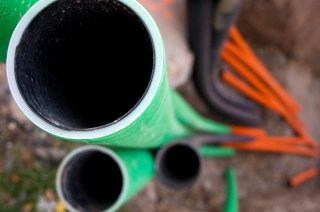
Project
Biobased plastics for high-quality applications
Within the FEASIBLE-project raw material suppliers, processors and end-users were supported by researchers on their search for alternatives to oil-based plastics. ‘We were specifically looking for commercially available biobased materials that are suitable as a replacement for commonly-used oil-based plastics in demanding applications,’ explains Karin Molenveld, researcher at Wageningen UR Food & Biobased Research. The researchers studied alternatives for barrier packaging, carpet backings and electronic housing. Manufacturer Océ, for instance, was interested in a biobased housing for printers.
The development of many biobased materials for industrial applications is still in its infancy, but that is only logical. It took fifty years for oil-based plastics to develop into the current generation of high-quality plastics. According to Menno Krommenhoek, Business Unit Director at HSV Technical Moulded Parts BV in Ede, it was a real challenge to find suitable biobased alternatives. ‘The bar was set very high,’ he says. ‘It’s quite a task to find biobased alternatives that are fire-retardant, heat-resistant and have sufficient strength.’ More research and development is still needed. At the same time, there needs to be more focus on market development. And the market for plastics is developing quickly. There is a clear trend to replace more and more materials, such as metals and ceramic, with plastics. As Krommenhoek explains, ‘The switch to biobased plastics is an important one but cannot be made in one go.’
Thorough testing
The FEASIBLE project team tested around twenty different biobased plastics. The researchers used standardised methods to test relevant properties such as strength, fire-resistance and maximum usage temperature. In addition, HSV tested the processing of various materials into printer panels by means of an injection-moulding process. Test samples were then cut from large printer panels to undergo further testing in the laboratory. ‘Since test methods and specifications can differ considerably for materials from different manufacturers, it is important that we selected and conducted these tests ourselves,’ Molenveld explains. ‘This is the only way to ensure a fair comparison of the materials.’ Various tests indicated that hybrid plastics – plastics consisting of a mixture of oil-based plastics and renewable materials (such as PLA) – were closest to achieving the properties we were looking for.
Knowledge of hybrid plastics
Krommenhoek and Molenveld believe that the extensive knowledge gained on available hybrid plastics and their possible applications is an important result of the FEASIBLE project. All this knowledge has been compiled into lists of various materials and their properties. As Molenveld explains: ‘End-users can use the lists to find the properties they are looking for and then select the material most suitable to their requirements.’ According to Krommenhoek, there is now substantial information about the current situation and the benefits and drawbacks of biobased plastics. Hybrid plastics are suitable for use as standard plastics (such as polystyrene or polypropylene) but they have the price of an engineering plastic (such as polycarbonate blends). As Krommenhoek explains, ‘You can accomplish quite a lot with certain materials. If the industry wishes to promote a green image and is prepared to pay the extra costs, either temporarily or permanently, interesting opportunities open up.’ And it seems like the industry is highly motivated to develop improved biobased plastics. During the first injection moulding trials , one of the hybrid material based on PLA and polycarbonate did not show sufficient flow . Two weeks later, the company sent a new mixture that die fulfill expectations. As Molenveld explains, ‘The research apparently encouraged the producer to develop a new materials. This type of effort is invaluable!’
